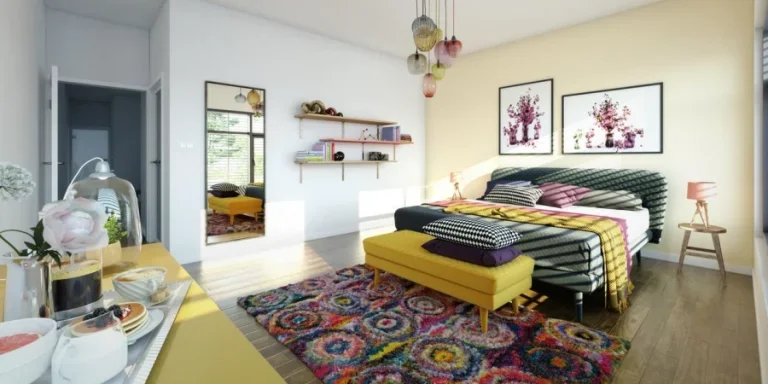In a world grappling with climate crises, technological overload, and social fragmentation, design is no longer just about aesthetics—it’s a survival toolkit. The WGSN A/W 26/27 report unveils a roadmap for navigating this complexity, revealing three radical design philosophies poised to dominate 2027: Kintentional, Geo-Logic, and Empowered Play. But what do these trends look like in action? From moss-covered skyscrapers to 2D fashion campaigns, we unpack the innovations shaping our future.
Table of Contents
Kintentional: Weaving Community into Every Thread
Geo-Logic: When Nature Hacks Technology
Empowered Play: Joy as a Radical Act
The Color Revolution: Strategic Palette Building
The STEPIC Imperative: Designing for Interconnected Realities
Conclusion: The 2027 Designer’s Manifesto
Kintentional: Weaving Community into Every Thread
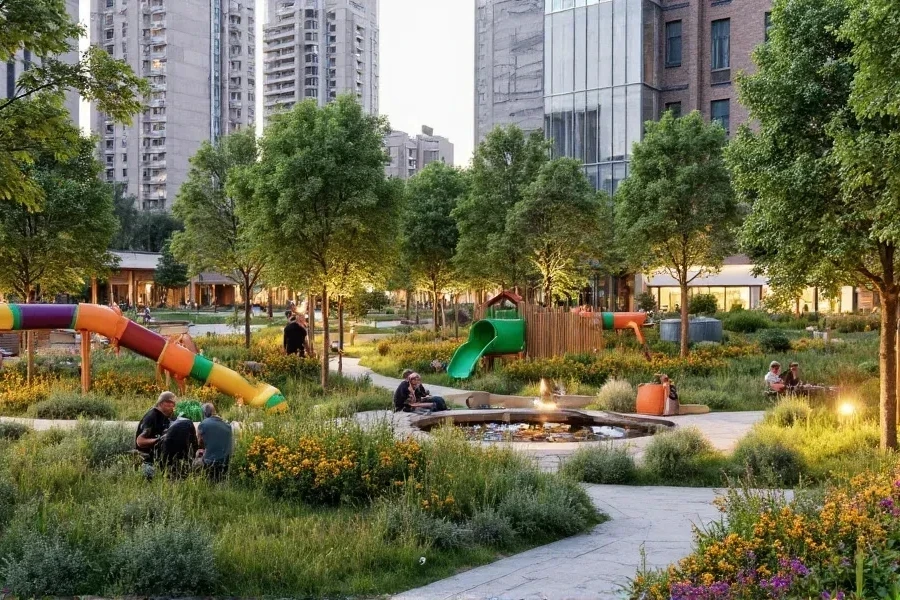
The Craft Revolution in a Disconnected World
Post-pandemic, 72% of global consumers report feeling socially isolated (McKinsey, 2023). Enter Kintentional, a movement blending “kin” (community) and “intentionality” to rebuild trust through tactile, human-centric design.
Restorative Comfort: Craft as a Healing Tool
Spanish brand Granny is redefining luxury by repurposing upholstery fabrics into avant-garde trench coats and tailored trousers. Their signature “Sofa Suit” uses dense, floral-patterned textiles traditionally reserved for armchairs, merging home decor’s durability with fashion’s elegance. Similarly, Beyoncé’s haircare line CÉCRED celebrates African beauty rituals through amber glass vessels and hand-carved combs, transforming everyday routines into heritage experiences.
Why It Works: A 2023 Nielsen study found that 68% of consumers prefer brands that foster communal connections over those emphasizing individualism.
Dynamic Unity: Color Clashes and Collective Joy
Toronto’s Othership wellness studio exemplifies this ethos. Their brick-and-mortar spaces combine terracotta-toned walls, curved ceramic benches, and communal sound baths. Members gather for “emotional fitness” sessions—think guided screams and ice baths—all set against WGSN’s rebellious Fresh Purple + Electric Indigo palette. “It’s about reclaiming joy as a collective act,” says founder Robbie Bent.
Renaissance of Real: Imperfection as the New Luxury
New York label Bode turns antique quilts and 19th-century tapestries into $3,000 jackets, while British perfumer Ffern crafts small-batch fragrances using Dorset lavender and Welsh chamomile. These brands reject algorithmic perfection, embracing raw edges and “human” flaws.
Takeaway: Kintentional isn’t a trend—it’s a lifeline for a world starved of connection.
Geo-Logic: When Nature Hacks Technology
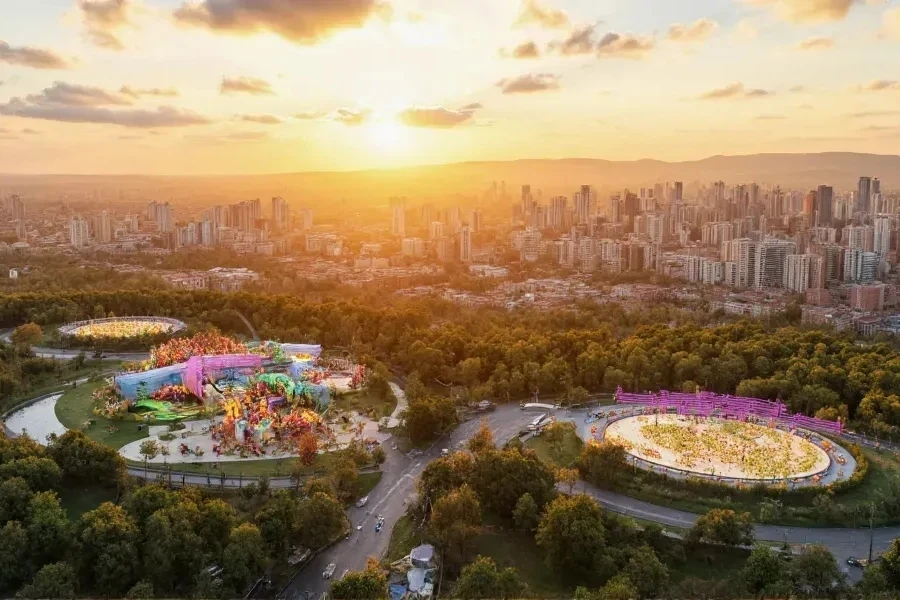
Biomimicry Meets Quantum Computing
With 83% of consumers now demanding climate action from brands (Edelman, 2023), designers are turning to biomimicry and fabrication. Geo-Logic bridges ancient ecosystems with AI, creating solutions that are primal yet hyper-modern.
Elemental Origins: Concrete That Breathes
Dutch startup Respyre coats buildings with a moss-infused cement that absorbs CO2 and reduces urban heat. Their Rotterdam pilot project saw a 20% drop in ambient temperatures, proving cities can be both functional and wild. “We’re not just building structures—we’re growing ecosystems,” explains co-founder Robbert van der Velden.
Bio-Synergies: Algae Dyes and Self-Healing Fabrics
UK biotech firm Sparxell creates iridescent pigments from cellulose nanostructures in plants, replacing microplastic glitter. Partnering with Patagonia, they’ve launched a glacier-inspired outdoorwear line dyed with spirulina algae. Meanwhile, MIT’s BioLogic Lab develops sweat-responsive sportswear using bacterial cellulose that expands to enhance airflow during workouts.
Science With Soul: AI-Driven Climate Adaptation
Activewear brand Omius uses machine learning to design jackets that expand in cold weather and contract in heat. Their “Climate Core” collection pairs Green Glow (a bioluminescent-inspired hue) with Electric Fuchsia, offering a sci-fi twist on sustainability.
Case Study: Singapore’s Green Mark Certified program mandates biophilic design for all new buildings. Architectural firm WOHA’s Kampung Admiralty integrates vertical forests, rainwater-harvesting facades, and communal farming plots—a blueprint for tomorrow’s cities.
Takeaway: Geo-Logic isn’t about “saving” nature—it’s about co-evolving with it.
Empowered Play: Joy as a Radical Act

The Rebellion Against Algorithmic Serotonin
In an era of TikTok-induced dopamine fatigue, Gen Z is flipping the script. Empowered Play ditches seriousness, using humor, nostalgia, and interactivity to spark innovation.
Surprising Simplicity: Flat Fashion Goes Viral
British designer Freddy Coomes crafts stiffened linen garments resembling paper dolls. His “2D Tuxedo” in Cherry Lacquer red became a TikTok sensation, with users styling virtual outfits via his #FlatFashion challenge. “It’s fashion meets meme culture,” says Coomes.
Cleverly Creative: Basketball Courts as Canvases
Nonprofit Project Backboard transforms derelict courts into psychedelic murals. Their Chicago installation uses Raspberry Pink and Classic Navy in a Memphis Group-inspired pattern, turning sports into public art. “Play spaces should ignite the imagination, not just competition,” says founder Dan Peterson.
Cult Classics Reborn: The Quiet Luxury of Transparency
Swedish label Asket’s “Permanent Collection” reimagines basics like white teas and jeans with regenerative cotton. Each garment includes a QR code detailing its carbon footprint and farming origins. “Transparency is the new exclusivity,” argues co-founder August Bard Bringéus.
Innovation Spotlight:
- BORNTOSTANDOUT®’s perfume bottles shift from Electric Indigo to gold when touched, pairing mood-boosting scents with interactive design.
- Unspun’s 3D-weaving robots craft custom denim in 10 minutes, slashing waste by 35%.
Takeaway: Play isn’t frivolous—it’s the engine of post-pandemic innovation.
The Color Revolution: Strategic Palette Building
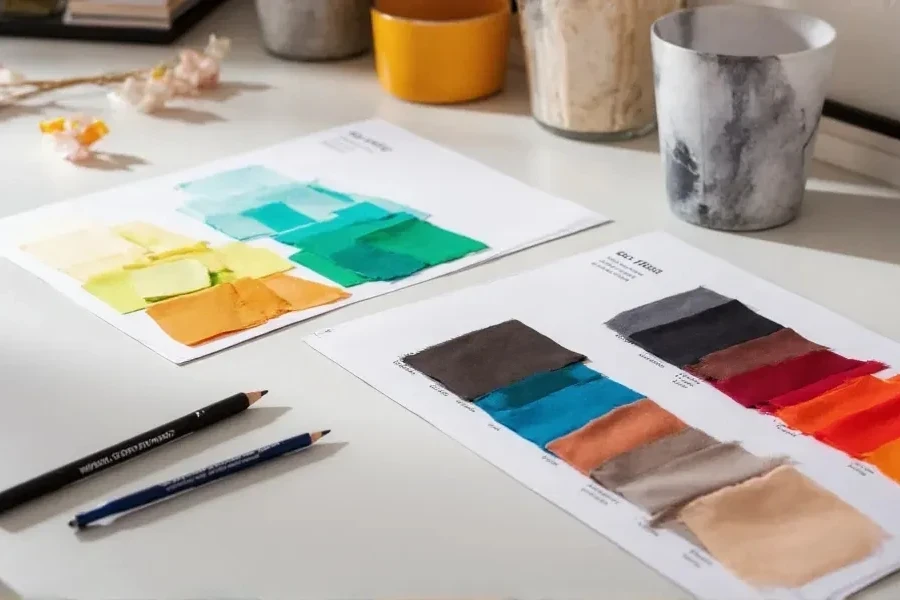
WGSN’s Seasonal (S), Annual (A), and Long-Term (LT) framework helps brands balance immediacy with sustainability:
- LT Anchors: Wax Paper (warm off-white) and Cocoa Powder (rich brown) ensure timelessness.
- A Adaptables: Transformative Teal and Red Earth evolve with cultural shifts.
- S Sparks: Electric Fuchsia adds urgency to limited-edition drops.
Example: H&M’s 2026 Conscious Collection uses Blue Aura (LT) for 70% of its line, accented by Electric Orange scarves (S) tied to Pantone’s annual color.
The STEPIC Imperative: Designing for Interconnected Realities
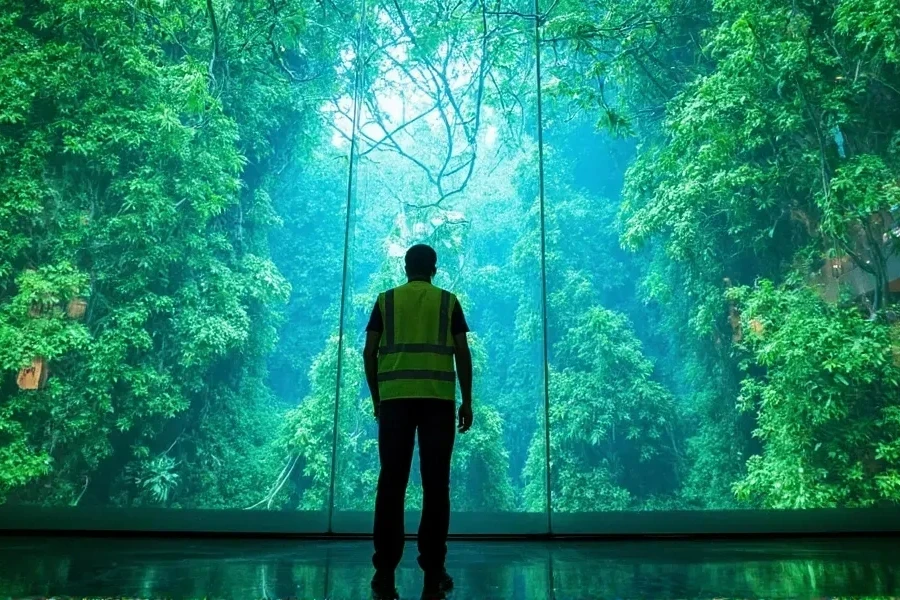
WGSN’s Society, Technology, Environment, Politics, Industry, Creativity (STEPIC) model underpins these trends:
- Kintentional ↔ Society (community healing) + Politics (equitable access).
- Geo-Logic ↔ Technology (AI) + Environment (carbon capture).
- Empowered Play ↔ Industry (circular economies) + Creativity (co-creation).
Real-World Synergy: IKEA’s SPACE10 Lab hosts “BioHackathons,” where coders and weavers prototype mycelium lampshades and algae-based dyes.
Conclusion: The 2027 Designer’s Manifesto
To thrive in 2027, designers must:
- Champion “And/And” Thinking: Merge craft with AI, play with purpose.
- Design for Emotional Durability: Create objects that feel alive (e.g., scent-shifting perfumes, adaptive textiles).
- Build Open-Source Communities: Share IP, like Sparxell’s open-access pigment formulas.
The future isn’t about predicting trends—it’s about creating worlds. As WGSN’s insights reveal, the brands that succeed will be those weaving humanity, ecology, and joy into every thread.
